=====
F.C. del P. de N.
====
F.C.P.N.
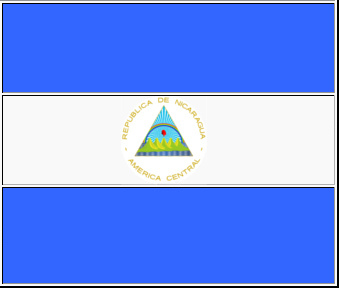
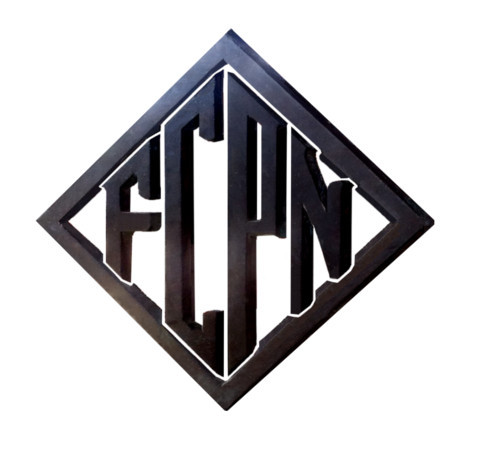
| nicatrenes.com | |||||
| Ferrocarril | |||||
| Railroad | |||||
| Central America Nicaragua | |||||
| Ferrocaril del Pacifico de Nicaragua ===== F.C. del P. de N. ==== F.C.P.N. |  |  |
| Documentacion | Documentation |
| Diagrama de Sección Libre (Juegos de funcionamiento) Sept. 1952 | Diagram of Free Operating Clearances Sept. 1952 |
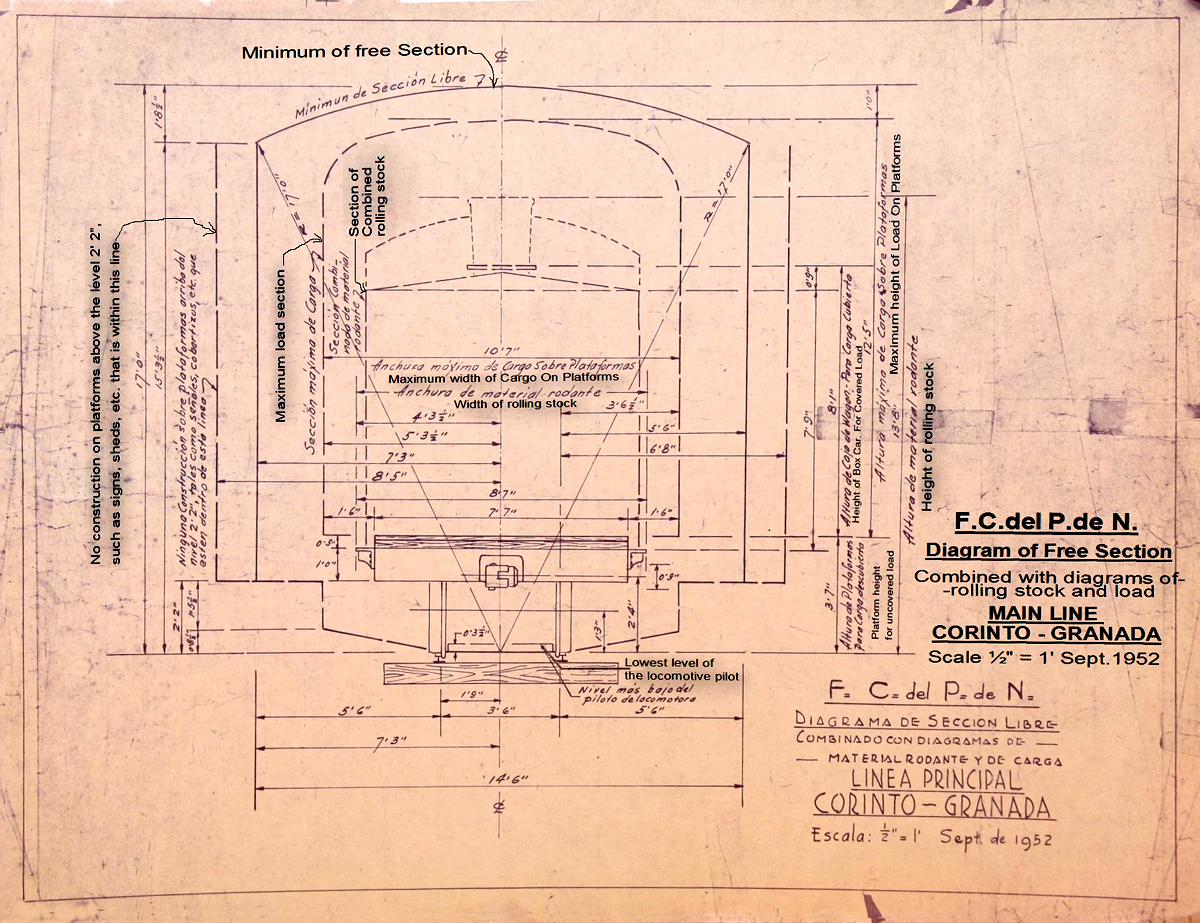 * * | |
| Español; Diagrama de Sección Libre (Juegos de funcionamiento) del Sept. 1952 Combinado con diagramas de - Material Rodante y de Carga Estos despejes son para la Línea Principal; desde "Corinto" hasta "Granada". Escala de ½ pulgada a 1 pie / Nicatrenes da la gracias y está muy agradecido, al Señor Eduardo Pérez-Valle h., por una copia de este Documento. El Señor Eduardo Pérez-Valle h. es un historiador reconocido de Nicaragua.* | English; Diagram of Free Operating Clearances for Sept. 1952 Combined with diagrams of clearances for- -Rolling Stock and Load. These clearances are for the Main Line; From "Corinto" to "Granada". Scale ½ inch to 1 Foot / Nicatrens greatly appreciates and gives thanks to Mr. Eduardo Pérez-Valle h., for a copy of this document. Mr. Eduardo Pérez-Valle h. is a well recognized historian from Nicaraguan.* |
| En la extrema izquierda
de este documento se representan los límites para las distancias
mínimas entre el tren y las estaciones ferroviarias, (A qué distancia
pueden estar los objetos del paso del tren y la altura del andén). En la parte del centro del dibujo tenemos la altura y la anchura máxima de la carga, (a qué distancia a los lados y a qué altura las cosas pueden ser cargadas en los coches ferroviarios.) En la parte central también nos muestra; el tamaño máximo de los vagones, las locomotoras y los rieles (Distancias desde el suelo y también la altura máxima hasta su parte superior). * | On the far left of this document
the limits for the minimum clearances between the train and the
railroad stations are represented, (How close can objects be to where
the train passes-by and the platform hight.) In the center portion of the sketch we have the maximum height and width of the cargo, (how far to the sides and how high things can be loaded on top the railcars.) In the center portion it also shows us the maximum size of the train cars, locomotives and rails (Clearances from the ground and also the maximum height to the top).* |
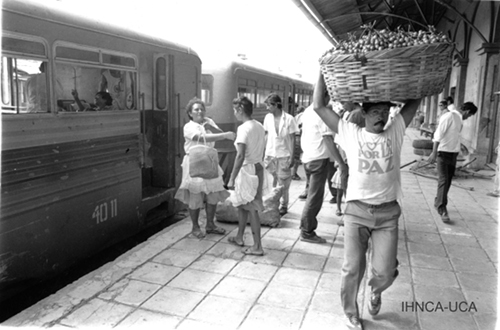 * * | 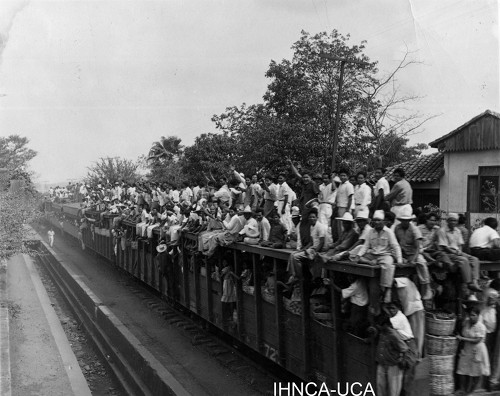 * * |
| Fotos del estacion; Fotógrafo; German Miranda Fecha; 3 de septiembre de 1993 / Estas dos fotos muestran visualmente la razón por la que los límites medidos representados por el esquma son necesarios para que nada interfiera o sea golpeado por el tren a medida que pasa. / Un ejemplo de lo que puede pasar; En los años 1930 el ferrocarril de Nicaragua hizo construir un tanque del petróleo grande, y fue instalado al lado de las vías del ferrocarril. Cundo un tren de pasajeros pasó al lado del tanque de aceite, uno de los coches de tren golpeó la espiga del tanque de aceite, rompiendo la espiga. La mayor parte de los pasajeros fueron bañados con aceite, mientras el tren pasaba. Durante la investigación, se encontró que la espiga había sido hecha unos pocos centímetros demasiado largo, lo que sobresale en el área de separación mínima. ¡Fue una experiencia horrible para muchos pasajeros en el tren, porque pensaban que iban a morir en la calamidad que siguieron! / Foto de los documentos del; “Instituto de Historia de Nicaragua y Centroamérica”- UCA. * | Station photos; Photographer; German Miranda Date; September 3, 1993 / These two photos show visually the reason why the measured limits represented by the sketch are necessary so nothing interferes or is hit by the train as it passes by. / One example of what can happen; In the 1930’s the Nicaragua railroad had a large oil-tank built, and it was installed by the side of the railroad tracks. As a passenger train passed next to the oil tank, one of the train cars hit the oil-tank’s spigot, breaking the spigot off. Most of the passengers were showered with oil, as the train passed. During the investigation, it was found that the spigot had been made a few inches too long thus protruding into the minimum clearance area. It was a horrifying experience for many passengers in the train, because they thought they were going to die in the calamity as it ensued! / Photos from the documents of; “Instituto de Historia de Nicaragua y Centroamérica”- UCA.* |
| ||||||||||||||||||||||||||||||||||||||||||||||||||||||||||||||||||